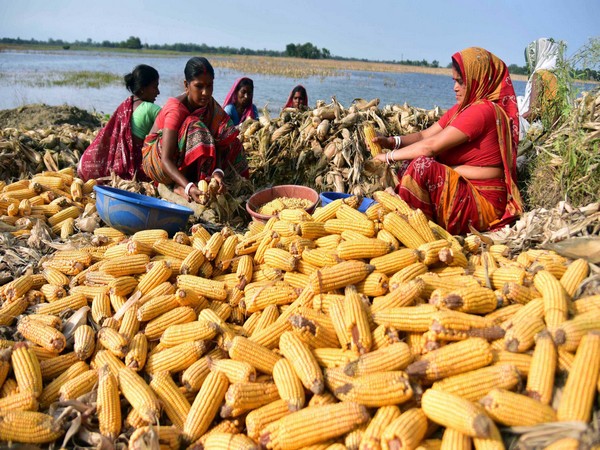Seed sellers optimistic about higher maize acreage

With winter approaching, maize farmers in Bangladesh anticipate increased acreage due to higher grain prices and import dependence. The Maize Association of Bangladesh notes satisfying prices from previous harvests and a deficit in meeting demand. The USDA reports a requirement of 75 lakh tonnes of maize, with local production at 50 lakh tonnes and the rest imported. Despite challenges like rising seed prices and delayed planting, farmers remain optimistic, aiming for 6.23 lakh hectares of cultivation this fiscal year.
With farmers preparing to plant maize for the winter, seed sellers and businesses expect an increase in acreage because of higher prices of the grain and Bangladesh’s import dependence in covering the shortage of the grain used by feed mills.
“Farmers have got satisfying prices during the last harvesting seasons. Besides, there is still a deficit compared to the requirement,” said Md Mizanul Hoque, senior vice-president of the Maize Association of Bangladesh (MAB).
Bangladesh requires up to 75 lakh tonnes of maize, using the grain to make feed for poultry, fish and livestock, but local production accounts for roughly 50 lakh tonnes. The rest is imported, said the US Department of Agriculture(USDA)in its Grain and Feed Update on Bangladesh in August this year.
Bangladesh grew maize or corn on 6 lakh hectares in the fiscal year 2022-23, registering an increase in cultivation area over the previous year, data from the Department of Agricultural Extension (DAE) showed.
For the current fiscal year, the DAE targets ensuring maize cultivation on 6.23 lakh hectares, said Md Tajul Islam Patwary, director of the field crops wing at the DAE.
“Farmers are showing an interest in growing maize as they are getting profitable prices,” he said, adding that overall yield would be 70 lakh tonnes if the cultivation target is achieved.
The USDA in its August issue revised upwards its prediction on maize acreage from 5.7 lakh hectares to 6 lakh hectares for the marketing year (MY) 2023-24, beginning from May.
It also hiked production forecast from 49 lakh tonnes the previous year to 52 lakh tonnes for MY2023-24, although prices of seeds, which are imported mainly from India, have increased due to the depreciation of the taka against the US dollar.
Muhammad Ali, a farmer at the Sherpur upazila in the northwest district of Bogura, said overall cost of cultivation will rise by Tk 6,000-Tk 7,000 per bigha due to higher costs of seed, fertiliser and wages.
“Fertiliser is not available at the government-fixed rate in our locality. Farm labour wages have also risen. So, my profit margin will shrink,” he said, adding that he would grow the grain on the same area of land — 25 bigha — this year as in previous years.
“It would be beneficial if we get fertiliser at lower prices.”
Ali said he sold maize at Tk 26 per kilogramme after the previous season.
FH Ansarey, president of agribusiness division of ACI Ltd, said the price of maize seeds has increased as a result of increased import cost owing to the devaluation of the taka against the US dollar.
“However, we are optimistic that our sales will grow this season,” added the official of ACI Ltd, which set a target to sell 600 tonnes of maize seeds during the winter and summer seasons.
Partha Sharathi Roy, executive director of Petrochem Bangladesh Ltd, said rainfall delayed the plantation of maize this year. Yet, there will be no effect on yield, he said.
He said the dollar shortage was a major challenge in importing maize seed and the increased cost of the greenback resulted in a spike in cost of imports too.
“But we have not transferred the cost on the prices fully. So overall it appears that there will be no negative impact on acreage,” he said.
“There is a positive sentiment among farmers as price of corn is high. So, we can expect that acreage will be good,” said Nurul Alam, director of field crops at Syngenta Bangladesh Ltd.
In its report, the USDA said corn is the second-largest cereal crop grown in Bangladesh.
“It is also considered as the largest cash crop for farmers. Bangladesh’s corn production has been steadily increasing in recent years due to favourable climatic conditions for corn cultivation and Bangladesh’s government’s efforts in crop diversification,” it added.
Usually, corn cultivation requires less irrigation than rice. It can also tolerate drought and salinity to some extent.
Source Link : https://www.thedailystar.net/business/economy/news/seed-sellers-optimistic-about-higher-maize-acreage-3449266















